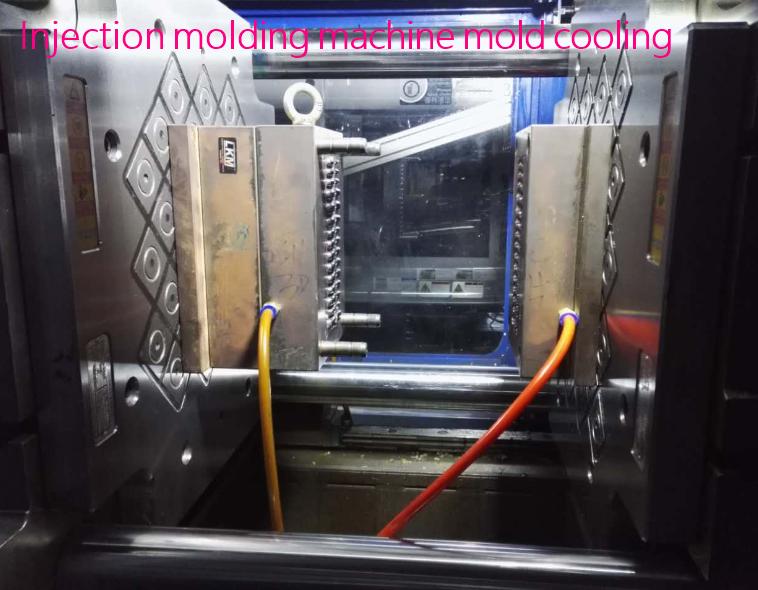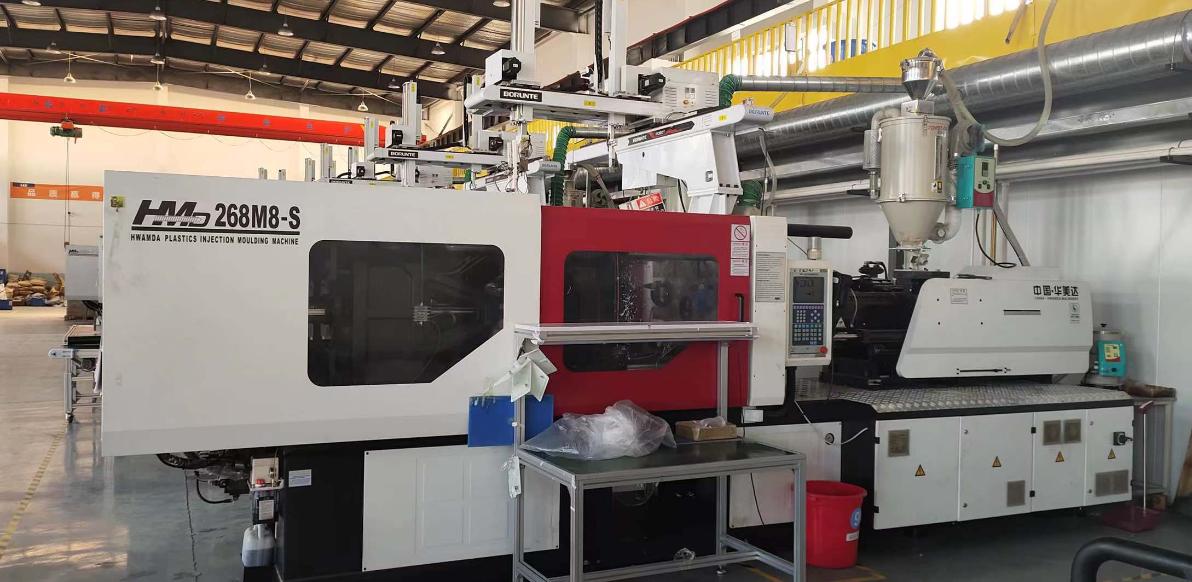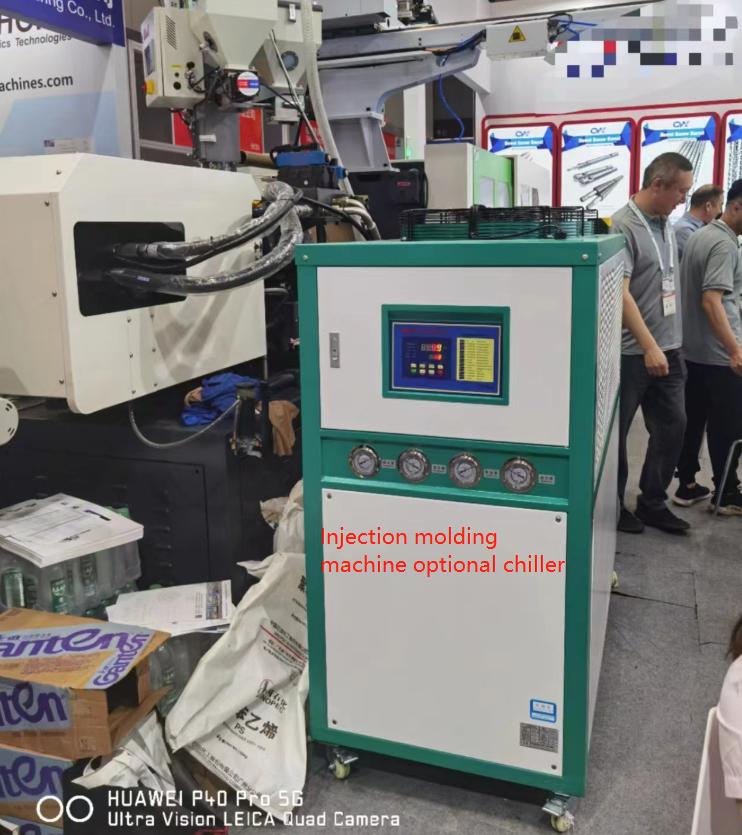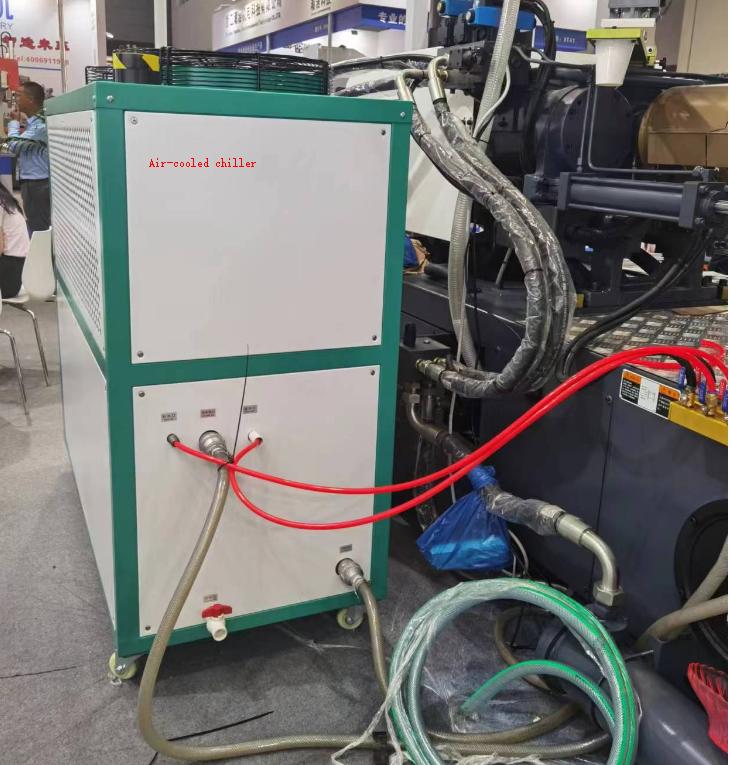
 English
English  Español
Español Português
Português русский
русский Français
Français 日本語
日本語 Deutsch
Deutsch tiếng Việt
tiếng Việt Italiano
Italiano Nederlands
Nederlands ภาษาไทย
ภาษาไทย Polski
Polski 한국어
한국어 Svenska
Svenska magyar
magyar Malay
Malay বাংলা ভাষার
বাংলা ভাষার Dansk
Dansk Suomi
Suomi हिन्दी
हिन्दी Pilipino
Pilipino Türkçe
Türkçe Gaeilge
Gaeilge العربية
العربية Indonesia
Indonesia Norsk
Norsk تمل
تمل český
český ελληνικά
ελληνικά український
український Javanese
Javanese فارسی
فارسی தமிழ்
தமிழ் తెలుగు
తెలుగు नेपाली
नेपाली Burmese
Burmese български
български ລາວ
ລາວ Latine
Latine Қазақша
Қазақша Euskal
Euskal Azərbaycan
Azərbaycan Slovenský jazyk
Slovenský jazyk Македонски
Македонски Lietuvos
Lietuvos Eesti Keel
Eesti Keel Română
Română Slovenski
Slovenski मराठी
मराठी Srpski језик
Srpski језик
Injection molding machine selection matching mold chiller calculation formula
2023-08-05
What should we pay attention to when choosing an industrial chiller for an injection molding machine?
The cooling capacity of the selected chiller directly affects the normal use of production equipment and operating efficiency. If the selected cooling capacity is too small, it will not be able to achieve the final cooling effect, which will not only reduce the production efficiency of the enterprise, but also increase the energy consumption of the operation. It will also cause the production equipment to not operate normally, affect the normal production of the enterprise, and delay the construction period. If the selection is too large, energy will be wasted, and the operating cost will also increase. Therefore, choosing an industrial chiller suitable for your company is the most critical.
On the premise of choosing a chiller, you must first determine whether your company is suitable for an air-cooled chiller or a water-cooled chiller, because they have different cooling methods and are also different in terms of installation.

The calculation method of the optional chiller model for the injection molding machine, the calculation formula of the ice water energy required for a pair of molds is: Q=W×C×△T×S
In the formula: Q is the required ice water energy kcal/h;
C is the specific heat of plastic raw materials kcal/kg°C;
W is the weight of plastic raw material kg/h;
△T is the temperature difference between the melt temperature and the product demoulding, °C;
S is the safety factor (generally 1.35-2.0). When a single machine is matched, a small value is generally selected, and when a chiller is matched with multiple molds, a large value is taken. For example, when an air-cooled chiller is selected, S should also be appropriately selected. Larger.
For example: a pair of molds produces PP products, and the production capacity per hour is about 50kg. How much is the cooling requirement? What size chiller should be equipped? Q=50×0.48×200×1.35=6480 (kcal/h);
The cooling capacity of 6480kcal/h is required per hour. It is difficult to obtain relatively complete data during the process of selecting a PR chiller. According to our past years of planning and supporting sales experience, △T=200℃, which is an average value of many commonly used products after years of statistics.

If there is a hot glue track on the mold, the energy of the hot glue track should also be added to the calculation of the cooling capacity. Generally, the hot glue track is based on KW, and the unit should be converted into kcal/h when calculating, 1KW=860kcal/h. If the water supplied to the factory is sufficient, the temperature is lower, and the cost is lower, there is no need to use a chiller at this time, which is generally not realistic unless the factory can be located by a large lake with a lower water temperature; the other It is the use of urban deep well water supply to meet the needs of temperature and flow, but the cost is often too high. This method can be used for experimental installations, but it is impractical to do so for factories.
2.Temperature difference between ice and water
The temperature of the mold cooling fluid (ice water) is generally subject to large changes due to the processing material and the shape of the product, such as a polyethylene thin-wall beaker, the mold requires the temperature of the ice water to be below 0 °C. In most other cases, the cold water temperature of the chiller required by the mold must be above 5°C, the microcomputer full-function chiller can provide ice water above 5°C, and the low-temperature intelligent temperature-controlled chiller can meet the requirements below 5°C and to below 0°C.
The temperature difference of the ice water at the inlet and outlet of the mold is often set according to the requirements of the product. In many cases, the temperature difference is 3-5°C, which is the most ideal, but sometimes it is necessary to have a temperature difference of 1-2°C.
Injection chiller product recommendation

The first is the air-cooled chiller, which is more convenient to install. It can be used after connecting the water pipe and plugging in the power supply. It is easy to install and move. It is especially suitable for occasions lacking water. The air-cooled chiller is air-cooled, so the installation location should be selected in a spacious and bright place, and there must be enough space around it.
Secondly, the water-cooled chiller needs to install a cooling tower to cool the unit. There are more pipelines than the air-cooled chiller, so the installation is more troublesome, and the water tower must be installed at a high place, occupying a larger area, and the installation and maintenance are also higher than the air-cooled. The water-cooled chiller is not affected by the ambient temperature and is suitable for placement and closed workshops. It does not emit hot air like the air-cooled chiller. In summer, it will not generate heat that will overheat the workshop workers. Especially suitable for dust-free workshop. The cooling capacity of the same power is 0.2 times higher than that of the air-cooled type.

Industrial chiller is an ideal cooling equipment for mold cooling and cooling system for circulating water in various industries. The application industry covers almost all industrial production, processing industry, air-conditioning refrigeration and cooling industry. The components of Jiusheng industrial chiller include air-cooled chiller, water-cooled chiller, open chiller, screw-type low-temperature chiller, mold temperature controller, oil-transported mold temperature controller, etc.
The cooling capacity of the selected chiller directly affects the normal use of production equipment and operating efficiency. If the selected cooling capacity is too small, it will not be able to achieve the final cooling effect, which will not only reduce the production efficiency of the enterprise, but also increase the energy consumption of the operation. It will also cause the production equipment to not operate normally, affect the normal production of the enterprise, and delay the construction period. If the selection is too large, energy will be wasted, and the operating cost will also increase. Therefore, choosing an industrial chiller suitable for your company is the most critical.
On the premise of choosing a chiller, you must first determine whether your company is suitable for an air-cooled chiller or a water-cooled chiller, because they have different cooling methods and are also different in terms of installation.

The calculation method of the optional chiller model for the injection molding machine, the calculation formula of the ice water energy required for a pair of molds is: Q=W×C×△T×S
In the formula: Q is the required ice water energy kcal/h;
C is the specific heat of plastic raw materials kcal/kg°C;
W is the weight of plastic raw material kg/h;
△T is the temperature difference between the melt temperature and the product demoulding, °C;
S is the safety factor (generally 1.35-2.0). When a single machine is matched, a small value is generally selected, and when a chiller is matched with multiple molds, a large value is taken. For example, when an air-cooled chiller is selected, S should also be appropriately selected. Larger.
For example: a pair of molds produces PP products, and the production capacity per hour is about 50kg. How much is the cooling requirement? What size chiller should be equipped? Q=50×0.48×200×1.35=6480 (kcal/h);
The cooling capacity of 6480kcal/h is required per hour. It is difficult to obtain relatively complete data during the process of selecting a PR chiller. According to our past years of planning and supporting sales experience, △T=200℃, which is an average value of many commonly used products after years of statistics.

If there is a hot glue track on the mold, the energy of the hot glue track should also be added to the calculation of the cooling capacity. Generally, the hot glue track is based on KW, and the unit should be converted into kcal/h when calculating, 1KW=860kcal/h. If the water supplied to the factory is sufficient, the temperature is lower, and the cost is lower, there is no need to use a chiller at this time, which is generally not realistic unless the factory can be located by a large lake with a lower water temperature; the other It is the use of urban deep well water supply to meet the needs of temperature and flow, but the cost is often too high. This method can be used for experimental installations, but it is impractical to do so for factories.
2.Temperature difference between ice and water
The temperature of the mold cooling fluid (ice water) is generally subject to large changes due to the processing material and the shape of the product, such as a polyethylene thin-wall beaker, the mold requires the temperature of the ice water to be below 0 °C. In most other cases, the cold water temperature of the chiller required by the mold must be above 5°C, the microcomputer full-function chiller can provide ice water above 5°C, and the low-temperature intelligent temperature-controlled chiller can meet the requirements below 5°C and to below 0°C.
The temperature difference of the ice water at the inlet and outlet of the mold is often set according to the requirements of the product. In many cases, the temperature difference is 3-5°C, which is the most ideal, but sometimes it is necessary to have a temperature difference of 1-2°C.
Injection chiller product recommendation

The first is the air-cooled chiller, which is more convenient to install. It can be used after connecting the water pipe and plugging in the power supply. It is easy to install and move. It is especially suitable for occasions lacking water. The air-cooled chiller is air-cooled, so the installation location should be selected in a spacious and bright place, and there must be enough space around it.
Secondly, the water-cooled chiller needs to install a cooling tower to cool the unit. There are more pipelines than the air-cooled chiller, so the installation is more troublesome, and the water tower must be installed at a high place, occupying a larger area, and the installation and maintenance are also higher than the air-cooled. The water-cooled chiller is not affected by the ambient temperature and is suitable for placement and closed workshops. It does not emit hot air like the air-cooled chiller. In summer, it will not generate heat that will overheat the workshop workers. Especially suitable for dust-free workshop. The cooling capacity of the same power is 0.2 times higher than that of the air-cooled type.

Industrial chiller is an ideal cooling equipment for mold cooling and cooling system for circulating water in various industries. The application industry covers almost all industrial production, processing industry, air-conditioning refrigeration and cooling industry. The components of Jiusheng industrial chiller include air-cooled chiller, water-cooled chiller, open chiller, screw-type low-temperature chiller, mold temperature controller, oil-transported mold temperature controller, etc.
X
We use cookies to offer you a better browsing experience, analyze site traffic and personalize content. By using this site, you agree to our use of cookies.
Privacy Policy





